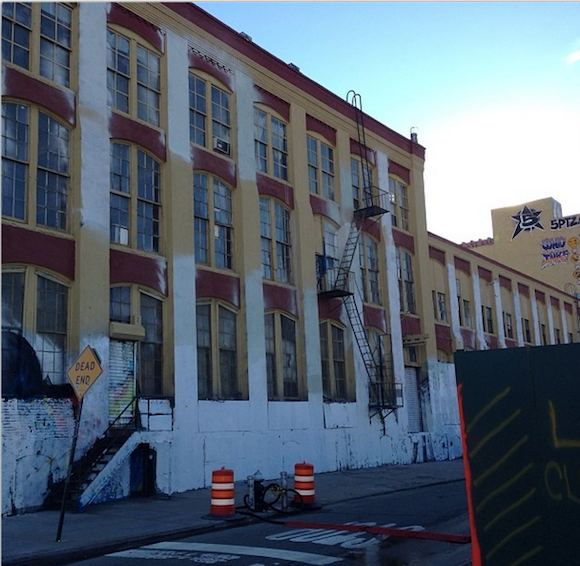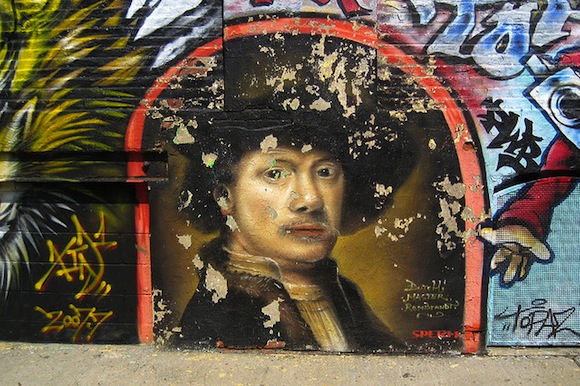
Early Tuesday morning while most of us were sleeping, 5 Pointz, the vibrant Long Island City graffiti temple that welcomed 7 train riders to Queens, was painted white. The space’s whitewashing marks the end of a protracted legal battle between Meres One, the space’s coordinator and curator, and the building’s owners, developers Jerry and David Wolkoff, and the end of the building as a cultural touchstone.
In August, the NYC Planning Commission approved the Wolkoffs’ proposal to demolish 5 Pointz in favor of new luxury high-rises. Meres and other artists sued claiming 5 Pointz was legally protected from alterations because the art covering it belonged to its creators, but graffiti was ultimately exempt from such protection and the lawsuit was dismissed. Then came the whitewash, one of the more depressing gestures of gentrification and sloppiest demonstrations of power I’ve ever seen in this city.
For two decades the Wolkoffs had allowed graffiti artists to cover the building’s exterior and in 2002 Meres began curating the murals. The site attracted street artists from around the world and was widely referred to as a global “graffiti mecca.” I discovered 5 Pointz when I was sixteen, while writing a feature on graffiti in Queens for a reporting class. I interviewed members of a graffiti-cleaning group in Astoria who spent countless hours painting over tagged buildings, but who said they appreciated 5 Pointz because it gave artists a workspace while remaining respectful to property owners. I was initially surprised people who played such an exhausting game of graffiti-removal whack-a-mole could still find value in street art. After visiting 5 Pointz, though, I could see how the space likely shaped their views.

5 Pointz forced people like these residents to imagine graffiti as more than just vandalism; its visual prominence helped validate an art form that is traditionally dismissed as delinquent. The most notable piece I remember from my first pilgrimage to 5 Pointz was a giant spray-painted Rembrandt self-portrait. This piece, like many works at 5 Pointz, played with the high/low culture distinction in a way that is hard to achieve through less stigmatized visual media.
5 Pointz was one of the borough’s greatest icons and the first place I always brought friends when showing them Queens. It’s hard to not see the death of 5 Pointz in the context of gentrification. The site was integral to the Long Island City brand in the same way many of Brooklyn’s now-evicted neighborhoods authenticated the borough. Tuesday morning’s crude whitewashing was wildly disrespectful to the artists and an insult to Queens. Destroying the building is tragic, but specifically targeting the art is sadistic. 5 Pointz’s value, like Chinatown’s, Harlem’s and Bushwick’s has been cheapened to its profitability as a tract of land. 5 Pointz always reflected New York City beautifully, but today it seems to illustrate the city’s condition a bit more bluntly.
One Response to
Leave a Reply




First time I’ve ever heard of 5 Pointz